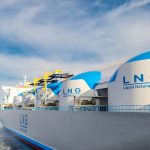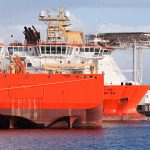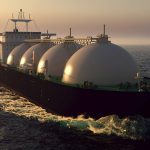The ocean winds whisper promises of clean, renewable energy, and a specialized fleet of vessels stands ready to answer their call. From ferrying technicians to colossal turbines to meticulously laying underwater cables, these maritime workhorses are engineering marvels powering the burgeoning offshore wind industry.
A Symphony of Specialization: Understanding the Vessel Fleet
- Imagine a self-contained city at sea, supporting offshore operations – that’s the role of Service Operation Vessels (SOVs). These behemoths, reaching up to 120 meters long, ferry personnel (up to 50!) and cargo (up to 3,000 tons) while offering emergency support. Equipped with dynamic positioning (DP) systems for precise location holding, onboard cranes for heavy lifting, workshops for repairs, and medical facilities for emergencies, they’re the operational hubs at sea. Daily rates range from €30,000 to €80,000, depending on size and capabilities.
- Think “oceanic speedsters.” Crew Transfer Vessels (CTVs), swift and agile (up to 30 meters long), are the taxis of the wind farm, quickly transporting technicians to specific turbines. Their high-speed engines ensure efficient access, while advanced navigation and safety equipment prioritizes crew well-being. Daily rates range from €5,000 to €15,000, depending on speed and capacity.
- Envision self-elevating giants rising above the waves. Jackup Vessels, reaching up to 150 meters with jacking leg capacities of 120 meters, provide stable platforms for turbine installation, maintenance, and even worker accommodation. Cranes, winches, and DP systems make them versatile workhorses. Daily rates range from €150,000 to €300,000 depending on size and lifting capacity.
- Picture underwater highways being meticulously laid. Cable Laying Vessels (CLVs), engineering marvels up to 300 meters long, are responsible for this crucial task. They boast specialized equipment for cable storage, trenching, and ROVs (remotely operated vehicles), ensuring precise and efficient cable installation. Daily rates range from €200,000 to €500,000 depending on size and cable capacity.
- Finally, we have the Multipurpose Support Vessels (MSVs), the utility players of the fleet (up to 100 meters long, bollard pull: up to 200 tons). Towing, anchor handling, diving support, and various mission-specific tasks are their forte. DP systems, advanced navigation tools, and onboard data management keep them adaptable and efficient. Daily rates range from €10,000 to €50,000 depending on size and capabilities.
Real-World Case Studies: Charting Success
The offshore wind industry is teeming with successful chartering examples:
- Hornsea Project One (UK): Ørsted, the global leader, utilized chartering for SOVs, CTVs, and MSVs, ensuring cost-efficiency and flexibility throughout the project.
- Bard Offshore 1 (Germany): This large-scale project employed a mix of owned and chartered vessels, including a jackup vessel for turbine installation and an SOV for personnel and cargo transport, optimizing resource allocation and budget.
- Vineyard Wind 1 (US): The first large-scale US project utilized innovative chartering strategies for CTVs, ensuring timely and safe transportation of technicians during construction and ongoing maintenance.
Navigating Towards the Right Partner: Key Considerations
When chartering, meticulous selection is crucial. Consider these key factors:
- Reputation: Opt for experienced and reliable companies with a strong track record in the offshore wind industry, checking industry certifications and references.
- Transparency: Ensure clear communication and detailed contracts outlining costs, specifications, responsibilities, insurance coverage, and dispute resolution mechanisms.
- Expertise: Seek companies with in-depth knowledge of vessel capabilities, project requirements, and relevant regulations. Discuss your specific needs, operational environment, and budget constraints to receive tailored solutions.










